Superchargers and Prochargers boost the engine’s power by improving airflow. Although both systems achieve the same goal, they differ in design and functionality. It’s normal for a beginner to confuse a Supercharger vs. Procharger.
A Procharger is a compact system that provides constant airflow to the engine and offers a higher RPM range. The Supercharger sends bursts of air to the engine using a rotor. This results in higher torque but reduces efficiency. Superchargers are bulkier compared to Prochargers and require additional hood modifications.
In this article, we’ll compare Prochargers and Superchargers and provide additional information to help you choose the best one for your car. Continue to know more –
What Is A “Charger” And Why Do We Use It?
Power generated from an engine depends on how efficiently it can burn fuel and how much of that energy is being transferred to the wheels. Better air circulation generates more power.
Simply put, chargers are compressor devices that boost the fuel and air mixture in the engine. This allows greater combustion efficiency with higher energy output.
Chargers are augmented with an improved exhaust as well as a better air intake system, which further improves efficiency.
What Is Supercharger?
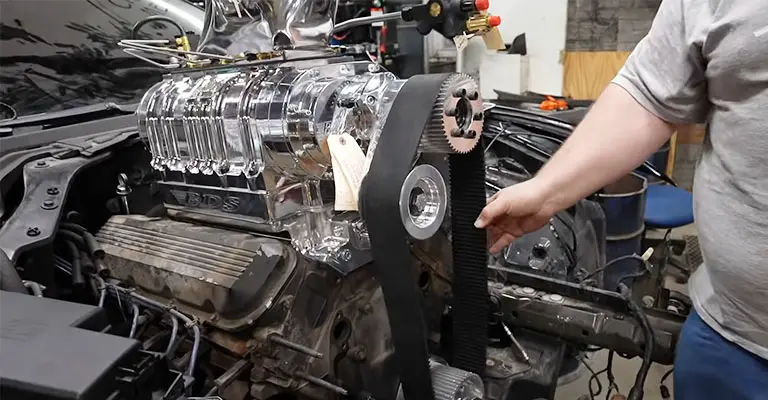
Superchargers work by compressing air above normal pressure using rotors and mixing it with fuel. This increases the power output by almost 46 percent.
Superchargers are an affordable way to increase the power of your vehicle. These are versatile and can be installed on most cars. But, depending on its size, hood modifications may be required.
A Supercharger usually operates using the engine’s power, resulting in more fuel consumption.
This short clip will help you understand the working mechanism better.
What Is Procharger?
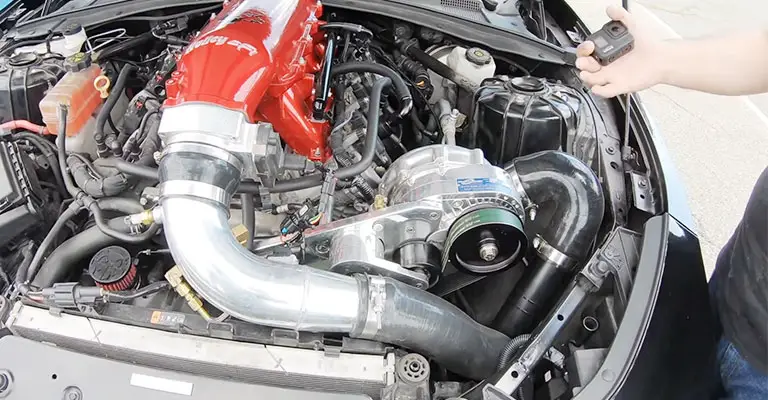
A Procharger is a more efficient substitute for a Supercharger. They have powerful centrifugal compressors that provide better engine airflow than a standard Supercharger.
The air is compressed to a high pressure using a fast-rotating impeller. It is then sent to the engine at a constant rate. This eliminates turbo lag and provides smoother acceleration.
It can be mounted directly to the engine without modifications, thanks to its relatively smaller size. However, this system is more expensive and produces a loud whining noise.
Supercharger vs Procharger – Advantages and Disadvantages
Advantages of a Supercharger
- Superchargers offer more horsepower range.
- A supercharged engine has higher revs.
- Acceleration is faster and achieves better top speed.
- 2 variants to choose from.
Disadvantages of a Supercharger
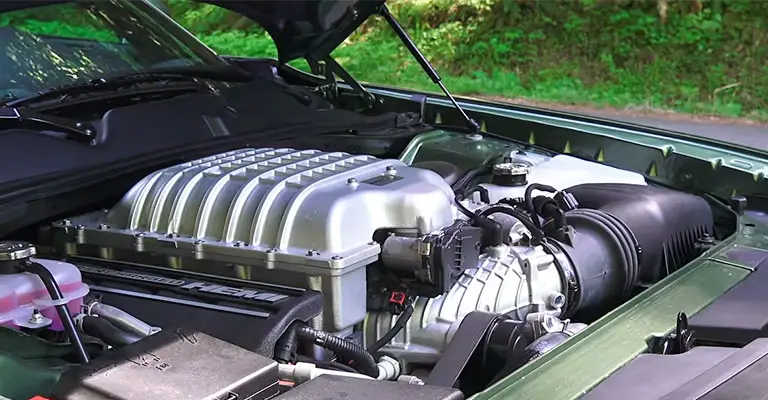
- Superchargers have an inconsistent air supply.
- A bulky design increases the overall weight of the car.
Advantages of a Procharger
- Proc hangers offer a clean, consistent power output.
- It is lighter compared to a Supercharger.
- Requires less space and can be installed at the front of the engine.
- It Burns less fuel.
Disadvantages of Using a Procharger
- The rotary intake makes a loud whining noise.
- This system is costly compared to Superchargers.
Efficiency And Cost Comparison: Supercharger Vs Procharger
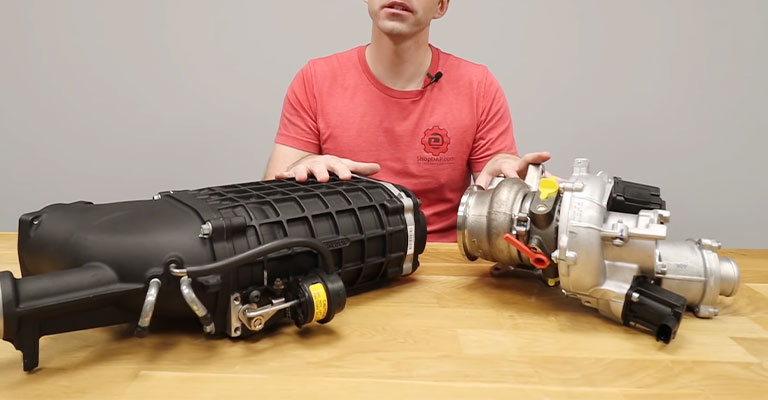
Let’s take a closer look at the operational cost and energy efficiency between Supercharger and Procharger.
Gas Mileage And Power Efficiency
Firstly, a Supercharged engine has a shorter response delay and faster acceleration. In contrast, a Procharged engine offers a more linear and smooth power output.
Fuel consumption is the second most important factor when it comes to efficiency. A Procharger has better fuel economy compared to a Supercharger. A typical Procharger has a mileage of 12-15 miles per gallon.
Procharger’s impeller technology allows for more air-fuel mixture to enter the engine. Thus, it can achieve the same RPM as the Supercharger by burning less fuel.
Installation And Maintenance Cost
Modifying an engine is quite expensive, especially if you’re installing components such as the Supercharger.
There are several brands of Superchargers on the market, and depending on the quality, it’ll cost $2,500-$2,700.
On the other hand, the starting price of a Procharger is $5,000-$8,500. Additionally, regular maintenance is necessary due to the excess stress put on engines.
Supercharger Variants to Choose From
Superchargers come in 2 variants – a root Supercharger and a thin-screw Supercharger.
Thin-Screw Charger
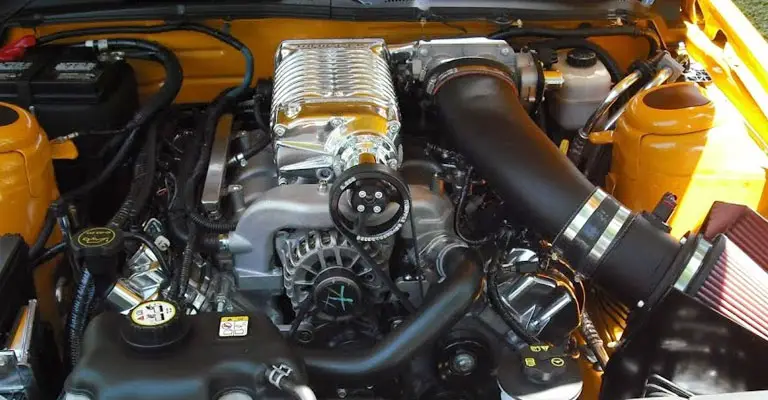
Thin screw Superchargers use a pair of worm gears to pressurize the air. It is more efficient than a rooted charger. The twin-screw charger has a low-profile design; as a result, it can be mounted on top of the engine. They are comparatively loud and require a sound suppression system.
Root Charger
The root charger is one of the most powerful Supercharger variants. It is mounted on the engine manifold and compresses the air with a mesh of lobes.
Typically, a root Supercharger has a lower efficiency because it delivers air in short bursts. The big bulge on the hood makes this set-up noticeable.
Factors to Take into Consideration
Here are some key factors you should look into before installing a Procharger or a Supercharger –
Regular Maintenance
A Supercharger puts tremendous pressure on the engine. So, regularly check the engine oil and keep it at an optimal level.
The charger tends to get extremely hot when operating, so use a premium-quality coolant to keep it at the proper temperature.
Using The Proper Fuel
The type of gasoline you use also plays an important role in the longevity of the charger.
Usually, 91+ octane is sufficient for everyday use. For racing purposes, use methanol or nitromethane-based fuel.
Contact your auto-professional to know more about which fuel type you should use.
Transmission System
Supercharged or pro-charged engines exert more energy compared to a regular engine. This higher output puts stress on the transmission. Usually, a stock automatic transmission system is not optimal for supercharging as it can handle only 250-300HP.
On average, a low-end auto transmission will lose 18% of the engine’s power, whereas a manual transmission only loses 11%. However, this can be fixed by upgrading to a high-quality auto-transmission.
Drive-belt Service Life
Procharger and Supercharger operate using a drive belt. This part lasts up to 50,000-70,000 miles. After that, it’ll need a replacement. Drive belt prices range from $75-$150.
Frequently Asked Questions
1. Does Procharger shorten engine life?
A properly installed Procharger will not shorten the engine lifespan. You can ensure the integrity of the charger as well as the engine through regular checkups, a cooling system, and proper oil changes.
2. Should I install Supercharger or Procharger?
Both variants have their unique advantages. The Procharger is more fuel efficient than a Supercharger, whereas the Supercharger offers more horsepower. So, depending on your requirements, you can choose either a Supercharger or a Procharger.
3. How often should I change the charger oil?
There is no standard guideline on how often you should change the oil. In most cases, an oil change is only needed if there is a sign of contamination or leakage.
Typically, charger oil lasts up to 12,000 miles. But, certain activities like racing or towing can use up the oil faster.
4. Is lubrication necessary for chargers?
Superchargers operate at high temperatures and pressure. So, without proper lubrication, it will soon become dry. This’ll create more friction inside the charger and ruin it beyond repair.
5. Do Superchargers need intercoolers?
Intercoolers cool down the compressed air from the Supercharger through heat exchange. This process is necessary to guarantee peak combustion and energy output. Improper heat exchange will reduce engine efficiency and longevity of the charger. We suggest installing a premium cooling system.
Conclusion
Superchargers and Prochargers have noticeable differences. So, choosing the right one can be difficult.
In short, Pro chargers have smoother acceleration which is ideal for competitive drag racing. On the other hand, Superchargers excel in high-torque performances, such as off-terrain drives.
A Procharger works best with high-quality automatic transmission. But if you’re using a manual transmission then a Supercharger is a better choice for you.
Consider installing a Procharger if you’re worried about fuel efficiency. Pro chargers have better fuel mileage of 12-15 MPG compared to the 30 MPG of Superchargers.
The supercharger is the best choice if you’re on a budget. Usually, supercharger installation costs $2,500-$2,700, while Prochargers cost $5,000-$8,500.
Hopefully, the above discussion cleared your confusion on Supercharger vs Procharger.
Leave a Reply